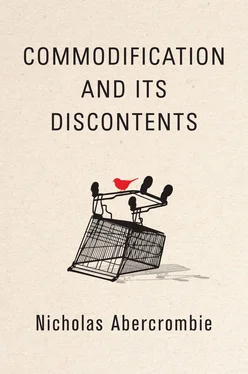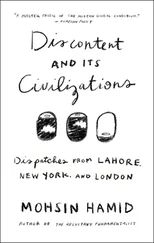In the ideological alliance between order-planning and justice-planning the former is undoubtedly dominant. That does not mean that conceptions of justice are largely missing. Indeed, the authority of the configuration as a whole is dependent on the continued association of the two elements. In practice, an interest in justice in town planning means paying attention to three main points – housing, land value taxation and the protection of the collective rather than the individual interest – primarily through the notion of the ‘balanced community’.
Over the last two centuries, the provision of housing in the United Kingdom has been a major political issue. David Donnison (1967), in reviewing the government of housing in 1967, noted that a government circular of 1933, declaring that the ‘evil’ of poor housing should be urgently addressed, has been repeated many times since then. It is still an urgent issue in 2020. Throughout the Long Century, the periodic eruptions of political interest in housing have been framed in terms of justice. It is the working class and the relatively poor whose housing conditions are at issue. From Friedrich Engels’ critique of 1844, through the government reports of the sanitation reform movement of the middle years of the nineteenth century, to the recognition (partly by a Royal Commission on the Housing of the Working Classes) of poor housing at the end of the century and into the next, to promises of reform – Homes for Heroes – at the end of the First World War and the need for the rebuilding of Britain after the Second, to the despair at the continuing slum conditions of the 1950s and 1960s, the language used has stayed remarkably constant. There was talk of damp, small, overcrowded, unhealthy, rotting, cold and expensive housing conditions, frequently summed up by the persistent use of the word ‘slum’. The history of town planning since the middle of the nineteenth century is, then, partly a history of attempts at solutions to the housing problem. For example, the Garden City and New Towns movements were brave attempts to solve both the justice-planning issue of good working-class housing and the order-planning imperative of control of urban expansion into the countryside.
Protests against the injustice of the private ownership of land – and large areas of land – clearly have a long history in the UK and all over the world (Linklater, 2015). I have already pointed to the nineteenth-century argument in the UK about land ownership and the possibilities of the nationalization of land or of taxing it in some way. Towards the end of that century, Henry George was creating a stir by advocating the taxation of land value in order to rectify the ‘glaring injustice of present social conditions’ and the manner in which the landed wealth of the Duke of Westminster was created not by the Duke, or even by his ancestors, but by ‘appropriation’ (George, 1931). Advocates of public ownership of all land could readily be found during the first half of the twentieth century. Ebenezer Howard, the originator of the Garden City idea, was a believer. Even in the late 1930s, several of the contributors to Clough Williams-Ellis’ Britain and the Beast (1937b) also argued for the nationalization of land, although rather more from an order-planning perspective – the control of development in the countryside – than from any conception of justice. However, the relatively extreme position of public ownership did not gain much political traction at any time in the twentieth century (Tichelar, 2018b). Perceptions of the injustice of the private ownership of land have less purchase as the importance of agriculture declines. In the Long Century, land becomes important for a different reason: the need to build on it. The injustice that that creates is two-fold. On the one hand, the sheer accident that somebody owns land that is wanted for development means that they benefit undeservedly from the increase in value. And, on the other, planning decisions themselves will increase (or decrease) the value of land, again giving an undeserved benefit to the landowner. I have earlier described the betterment and compensation interventions proposed and implemented to deal with this injustice, and which briefly formed the basis for the effective nationalization of development rights and their associated values in 1947. It has not been a happy history but one full of technical difficulties and unsurprising and successful political opposition from those involved in urban development. The injustice remains but would, in any case, be better met by more systematic taxation of wealth.
The doctrine of the ‘balanced community’ has a long history in town planning in the UK. It is the idea that new (and, if possible, old) housing developments should incorporate a balance of social groups distinguished by social class, ethnicity and age. At the end of the nineteenth century, the emphasis was chiefly on class. Bournville, for example, was explicitly constructed so that working- and middle-class people could live together in close proximity. The same was true of Hampstead Garden Suburb in north London, constructed in the years before the First World War. In this development, the ideal of a mixed community was to be the distinguishing characteristic. In the mind of its founder, a balanced community was to ‘provide a bridge between poverty and privilege and to overcome the ignorance which separated the Two Nations’ (Grafton Green, 1977: 5). The same assumption influenced New Towns policy after the Second World War. The idea was supported by a dislike of segregated housing. For instance, part of the distaste for suburban development that I have described earlier arose from beliefs about the undesirable consequences of an almost entirely middle-class population housed in that location. The same idea informs reactions to working-class housing estates constructed in the interwar period and, more recently, to the housing of immigrant families in Northern towns. The idea of balanced communities was not without its critics in the town planning community in the Long Century. It has also been pointed out very often that, despite its longevity, the policy remains unsupported by any evidence (Gans, 1961; Sarkissian, 1976). Furthermore, its aims seem to vary over time (Cole and Goodchild, 2000).
Nevertheless, it is not the rationality of the balanced community that is at issue here but, rather more, its ideological force, which comes from a belief in the importance of social harmony and a collective life. These two principles are related in their common assumption of an idealized community in the rural village. That assumption is widely invoked in the planning literature. Raymond Unwin, for example, writing in 1909, argued that past societies had manifested ‘the interdependence of different, clearly defined classes’ but ‘these uniting forces have been weakened or lost in modern times’.(1909: 383, 384). ‘In feudal days there existed a definite relationship between the different classes and individuals of society, which expressed itself in the character of the villages and towns in which dwelt those communities of interdependent people.’ What is now required is a restoration of the ‘spirit of association’ so that in ‘the planning of our towns in future there will be an opportunity for the common life and welfare to be considered first’ (1909: 375, 376). Writing thirty years later, Hugh Massingham still adheres to the romanticism of the village community of the Middle Ages. ‘The village community represented a fusion between the social, economic and domestic, and aesthetic life.’ The holders of land lived in an environment of ‘social equality and mutual aid’ (1937: 19). The housing programme of the radical Labour government of 1945 was informed by similar assumptions. As Cole and Goodchild write of Aneurin Bevan, the minister responsible: ‘he wished to build on council estates “the living tapestry of a mixed community” similar to the long-established English and Welsh village … Social balance, he felt, could be provided through a single, inclusive tenure. He thus sought to develop a universal basis for public housing provision, to parallel initiatives in state education, health and social insurance’ (2000: 353).
Читать дальше












